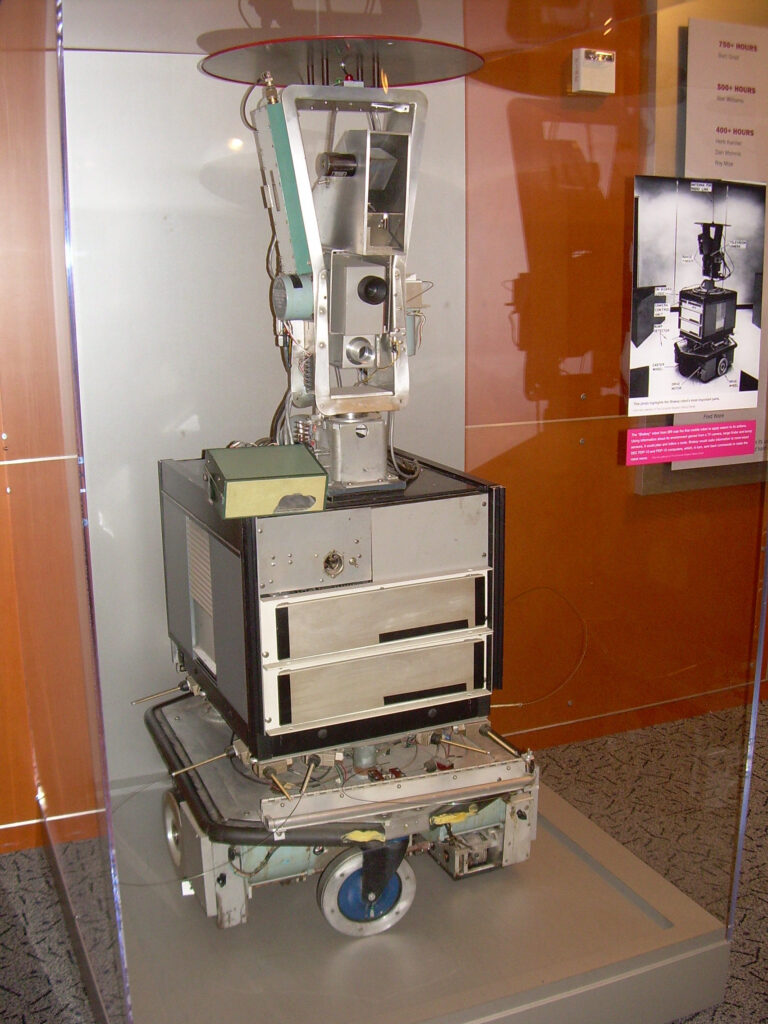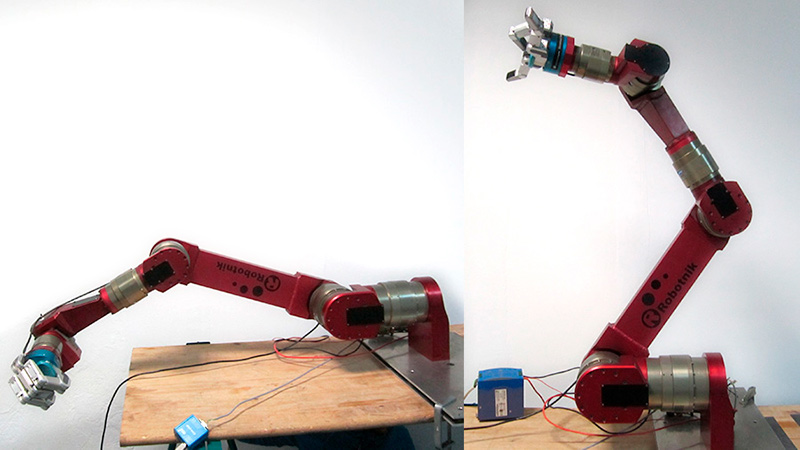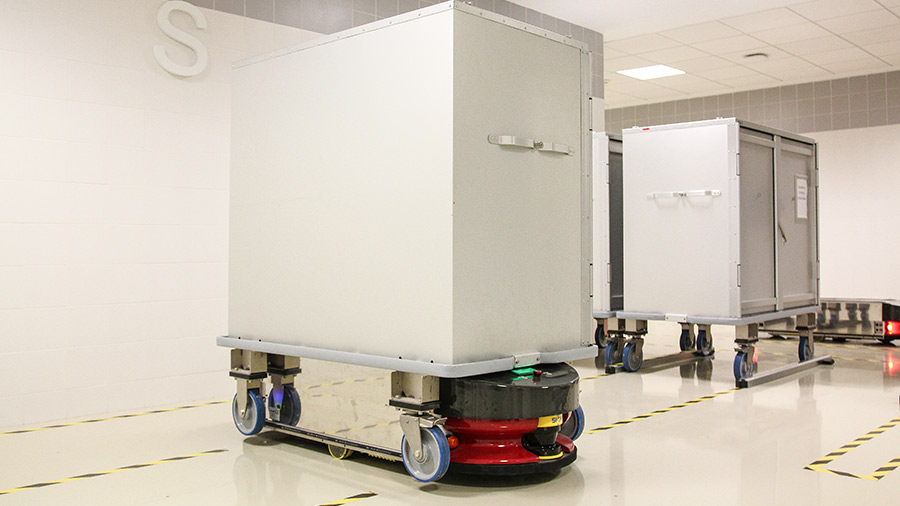- History of robotics through the most important moments up to the present day.
Robotnik, as a company specialized in mobile robotics, is a witness of the important ‘boom’ that the robotics sector has experienced in recent years, having a definite boost with the recent emergence of disruptive technologies such as 5G, augmented reality, Artificial Intelligence or blockchain, to name a few examples.
The origins of robotics and the first robots contain diverse names and dates, but there has always been the same common goal: to prevent humans from performing the heaviest, most dangerous and tedious tasks.
Thanks to autonomous and industrial mobile robotics, many large companies, but also SMEs, are experiencing a reduction in production costs and an increase in their profitability.
What has the evolution of robots been like up to this point?
Here is a brief overview of this exciting sector to find out the main keys.
Background of robotics
Do you know the meaning of the word ‘robot’? Etymologically, the term comes from the Czech word robota meaning ‘forced labor’. It was used for the first time, 100 years ago now, in a play by the author of the same nationality, Karel Capek.
This play entitled ‘RUR (Rossum’s Universal Robots)’ was premiered in 1921 and was a great success all over the world, leaving without knowing it, a word that would last forever.
To talk about the origin of robotics, we must mention Aristotle and his ideas about ‘automated tools’, Henry Ford, Leonardo Da Vinci and his mechanical knight or Isaac Asimov. Here we name the milestones that have brought real advances towards automation and autonomous mobile robotics, already in the middle of the 20th century.
Autonomous mobile robotics is considered to be that which is capable of making decisions in changing environments without the need for supervision by an operator. Some relevant historical data would be the following:
- 50s, England. ELSIE (Electro-Light-Sensitive Internal-External) is the first mobile robot in history. Its technical capabilities were still very limited. It was really a light-sensitive electromechanical robot with internal and external stability.
- 60s, Standford Research Institute. SHAKEY: robot that already incorporated tactile sensors and a vision camera. It could move on the ground thanks to two computers (one on board and one remote) that were connected by radio.
- 70s, MARS-ROVER: platform that integrated a mechanical arm, proximity sensors, a laser telemetry device and stereo cameras. It was developed by NASA to explore hostile or unknown terrain.
- 80’s, SRI’s CART: platform that modeled obstacles thanks to Cartesian coordinates on its vertices.

Do you want to read more about the progress of these milestones?
Evolution of industrial robotics
Industrial robots are not usually humanoid in shape, although they are capable of reproducing human movements and behaviors but with the strength, precision and speed of a machine. The first industrial robots were developed by George Devol, American inventor and founder of the first robotics company in history: Unimation.
In 1954, what is considered the first industrial robot was developed in the USA: a hydraulic arm called Unimate, used to lift heavy loads, which was sold to General Motors. In the following years they developed several versions of the same model of the company Unimation that were introduced, little by little, in some factories mainly in the automotive sector.
It was at the end of the 1960s and in the 1970s when considerably more advanced robotic arms appeared in which cameras or sensors were already used. The Shakey robot, designed in 1966 by the Standford Research Institute, stands out as an important milestone for mobile robotics. Shakey was the world’s first mobile robot, thanks to software and hardware that allowed it to perceive and understand the environment, albeit in a limited way.
The first mobile industrial robots also appeared in parallel. In 1954, Barrett Electronics Corporation brought out the first electric vehicle that did not require a human driver, what we know as the first AGV (Autonomous Guided Vehicle). AGVs acquired more complex behaviors in the 80s as technology advanced and already in the 90s we found AGVs with much more precise sensors and lasers.
As explained in another post, an AGV is not an autonomous mobile robot. It is useful to understand the differences between the two in order to make the right decision when introducing them in a factory or company.
1980s and 1990s
Although the first industrial robots were created in the United States, in the 1980s and 1990s they were already being developed in some European and Asian countries, mainly in Japan and Sweden. You probably remember IBM’s Deep Blue beating world champion Garry Kasparov in a game of chess.
Nowadays, the development of Artificial Intelligence or other technologies such as those mentioned at the beginning of the article are so powerful that the game against Kasparov sounds obsolete. The applications that AI brings to robotics, and thus to the industrial sector, are infinitely more valuable and more profitable than winning chess games. Some of the advantages that AI brings to industrial robotics are:
- Increased accuracy
- Improved decision making (especially in the face of obstacles).
- Predictive maintenance
Automation is a field in constant change, so sometimes it is difficult for some companies to start the path to a smart factory. For this reason, Robotnik always facilitates, accompanies and adapts mobile robotics to the specific needs of the company, whatever its size. Automation and robotics go hand in hand.

Service robotics
Collaborative robotics is, by definition, service robotics. This is the sector in which Robotnik has been developing its activity for 20 years and which has allowed it to become a worldwide reference company.
A service robot for professional use is defined as a robot that operates partially or totally autonomously in the service of human welfare and equipment, excluding manufacturing operations (ISO TC 184/SC2 definition).
We found several cases of service robotics in which Robotnik is currently involved. A clear example of this has been reflected in the time of pandemic by Covid-19, where service robotics has been key in different fields.
Currently, Robotnik develops its robots and mobile manipulators for very diverse sectors: logistics, inspection and maintenance, defense, agriculture or security, among others.

Industrial Robotics: present and future
Although for years industrial robotics has been reserved for large companies, Robotnik now also offers mobile robotics solutions for SMEs. These companies must bet on innovation and technology if they want to remain competitive. In this sense, the cost of investing in mobile robotics is an investment.
Currently, there is already talk of the birth of the fourth industrial revolution, where autonomous mobile robotics plays a leading role. Intelligent robots are playing a crucial role in the digitization of the entire industry worldwide.
Flexibility, collaboration between machines and people and diversification into new sectors and business models are setting the pace for robotics in 2021, according to the conclusions published by the International Federation of Robotics (IFR). We must not lose sight, therefore, of the keys that will help companies continue to grow in the best possible way.

